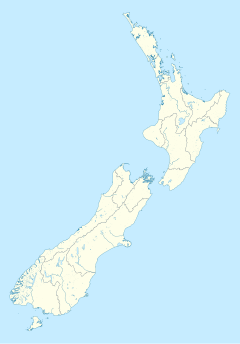
Back Unglück in der Pike-River-Mine German Accidente minero de Pike River Spanish Acidente na mina de Pike River em 2010 Portuguese
| Date | 19 November 2010 |
|---|---|
| Time | 3:44 pm NZDT (0244 UTC) |
| Location | Pike River Mine Greymouth, New Zealand |
| Coordinates | 42°12′20″S 171°28′57″E / 42.20556°S 171.48250°E |
| Also known as | Operation Pike |
| Deaths | 29 |
| Non-fatal injuries | 2 |
| Inquiries | Royal Commission[1] |
| Website | Pike River Royal Commission |
The Pike River Mine disaster was a coal mining accident that began on 19 November 2010 in the Pike River Mine, 46 km (29 mi) northeast of Greymouth, in the West Coast region of New Zealand's South Island following a methane explosion at approximately 3:44 pm (NZDT, UTC+13). The accident resulted in the deaths of 29 miners.
The Pike River Mine incident ranks as New Zealand's worst mining disaster since 1914, when 43 men died at Ralph's Mine in Huntly. It also resulted in the country's worst loss of life caused by a single disaster since the 1979 crash of Air New Zealand Flight 901, although it was surpassed three months later by the February 2011 Christchurch earthquake.[2]
At the time of the explosion 31 miners and contractors were below ground. Two miners managed to walk from the mine and were treated for moderate injuries. The remaining 16 miners and 13 contractors were believed to be at least 1.5 km (1,600 yd) from the mine's entrance at the time of the initial explosion.
Subsequent explosions on 24, 26 and 28 November ended any hopes of any further survivors and raised serious doubt that any bodies would ever be recovered.[3][4][5][6][7]
In December 2012, Prime Minister John Key said he would apologise in person to the families of the dead, for the government's weak regulations and inadequate inspection regime.[8]
In 2017 the Government established a new Pike River Recovery Agency, with re-entry expected by March 2019. It reported to the Minister Responsible for Pike River Re-entry, Andrew Little. Re-entry was expected to cost $23 million over three years. The agency took over the mine from Solid Energy, after it entered liquidation in mid-March 2018. In February 2021, the Pike River Recovery Agency reported that it had reached a point 2.2 km up the mine access tunnel to the site of a rockfall. This was the furthest point into the mine that the agency planned to go, and the work to this point had cost approximately $50 million. On 23 March 2021, the Minister responsible for Pike River Re-entry, Andrew Little, stated that it was too hard and too expensive to go any further into the mine.
The accident led to significant changes in occupational safety legislation, with the passage of the Health and Safety at Work Act 2015 and the establishment of WorkSafe New Zealand.
- ^ John Hartevelt; Amy Glass; Kirsty Johnston; Andrea Vance; Michael Fox (29 November 2010). "Pike River disaster inquiry announced". Stuff.co.nz. Retrieved 29 November 2010.
- ^ Evans, Adrian (24 November 2010). "Pike River joins list of mining tragedies". New Zealand Herald.
- ^ Beswick, Angela. "Pike River: Second explosion, no survivors". 3 News. Archived from the original on 11 February 2012. Retrieved 24 November 2010.
- ^ Stevenson, Andrew (24 November 2010). "New blast: all miners feared dead". The Sydney Morning Herald. Retrieved 24 November 2010.
- ^ "Third explosion "won't set back recovery"". TVNZ. 26 November 2010. Retrieved 26 November 2010.
- ^ NZPA (28 November 2010). "More blasts at Pike River mine". Stuff.co.nz. Retrieved 28 November 2010.
- ^ "Pike dead may never be recovered: Solid Energy". MiningNews. 11 May 2012. Archived from the original on 24 July 2012.
- ^ "Key to apologise to Pike families". 3 News. 10 December 2012.
© MMXXIII Rich X Search. We shall prevail. All rights reserved. Rich X Search
